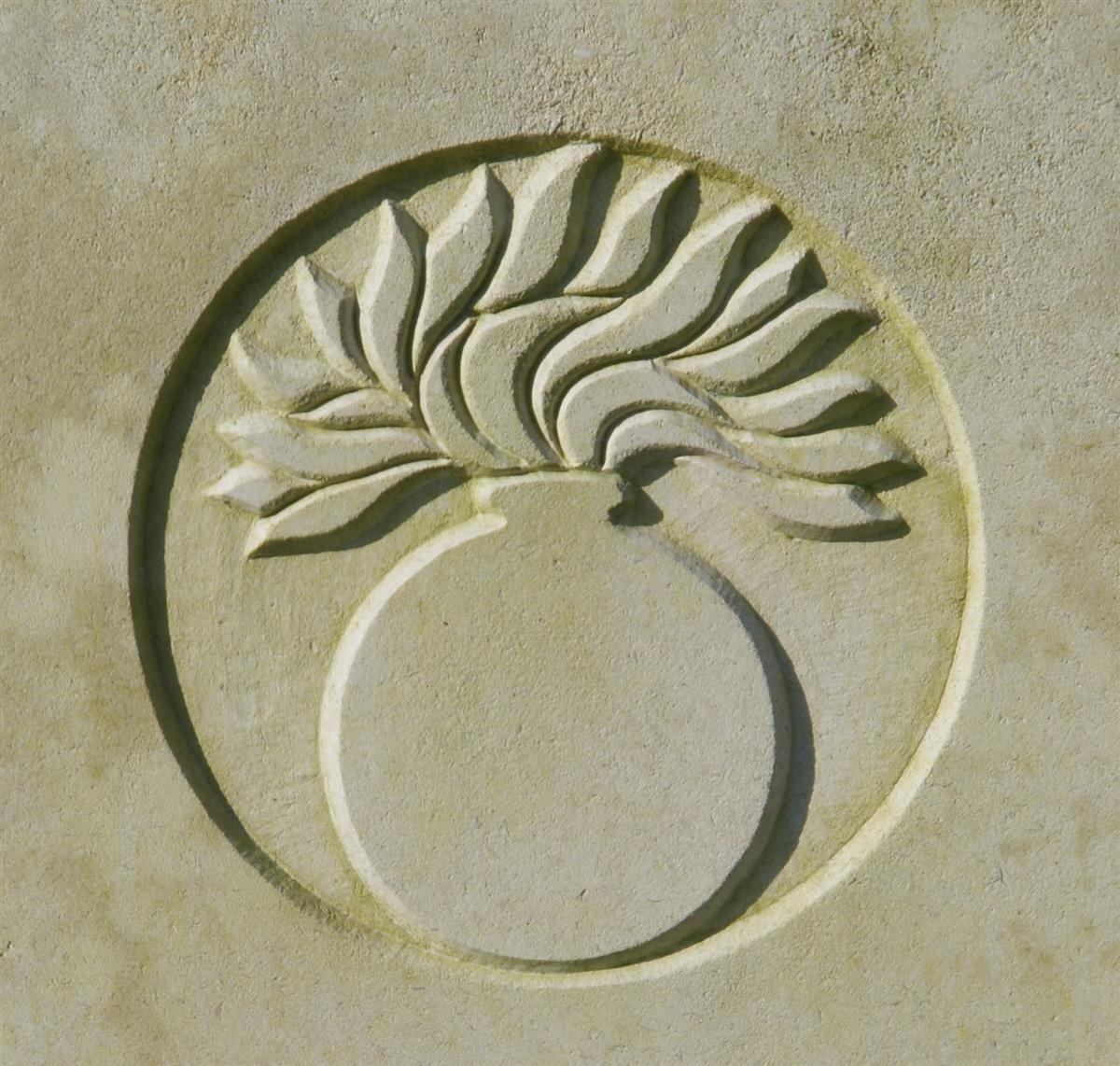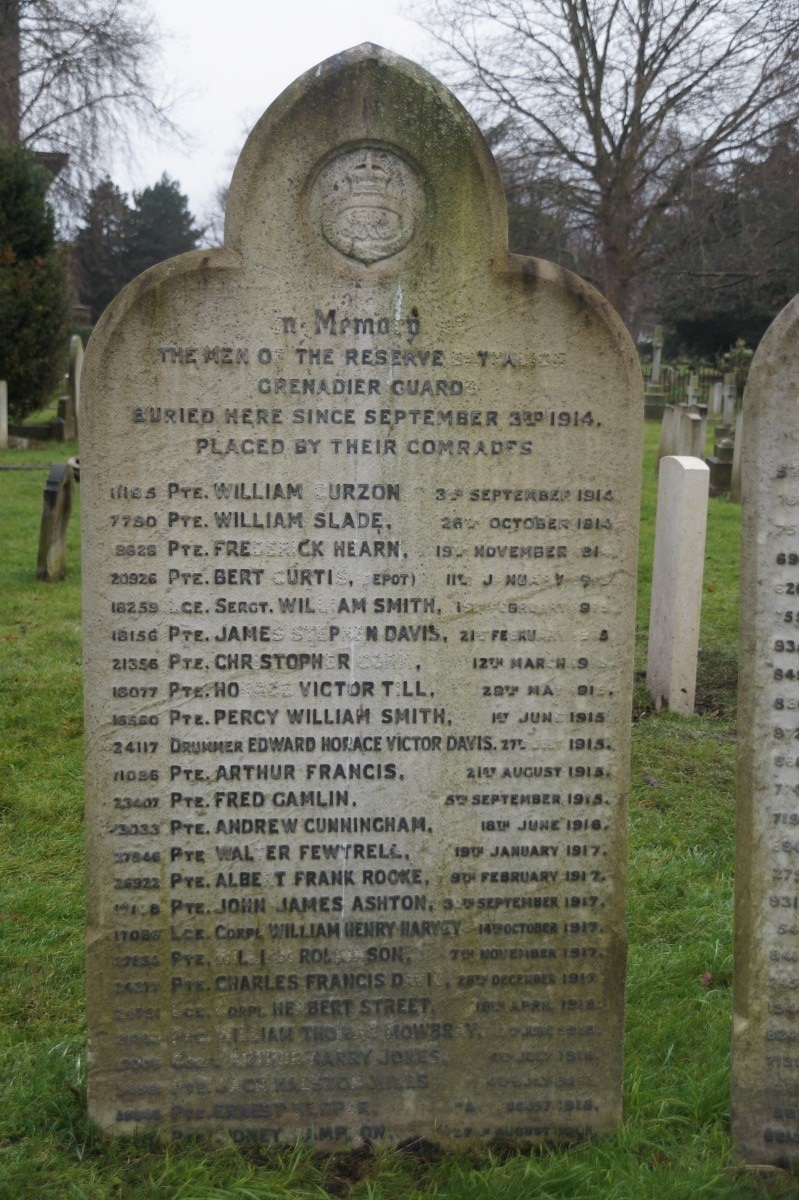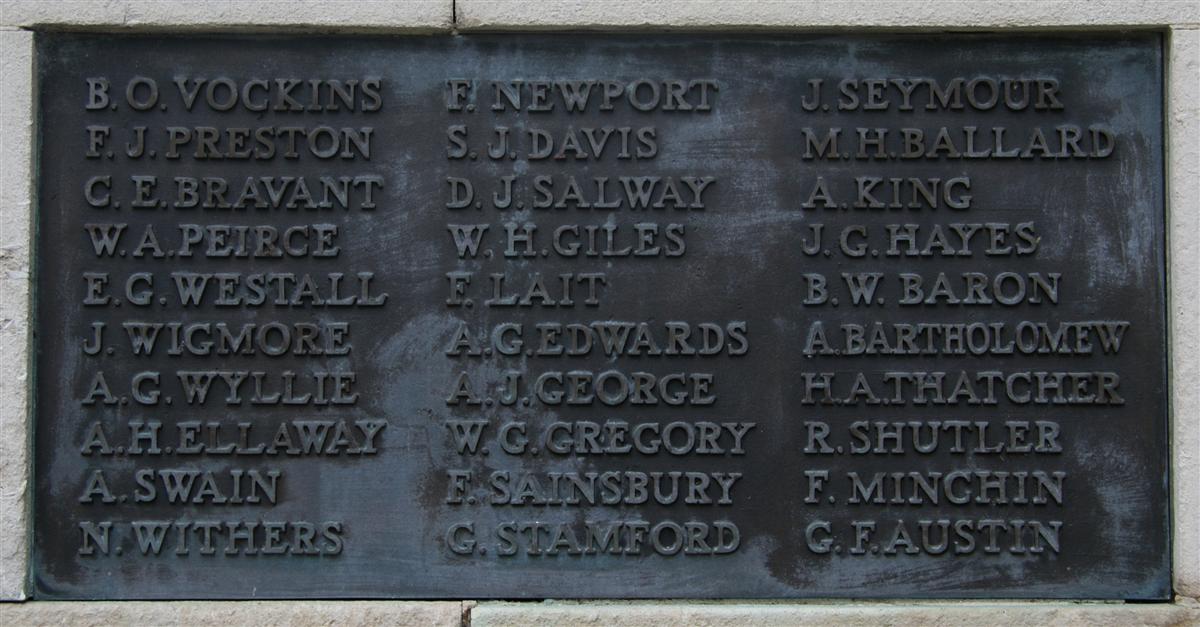Stephen James Davis
Private 18156 Stephen James Davis, 4th Battalion, Grenadier Guards
Stephen was born in Newbury in early 1885, the son of Stephen Davis and his wife Catherine née Mann. He was the tenth and youngest child of a large family, his siblings being: Thomas (born abt 1861), Frederick (abt 1863), Henry (1865), Harriet (1869), Mary Ann (1871), William Alfred (1873), Kate (1875), Marion (1877) and Nellie (1880). Tragically, Stephen would never know his father; Stephen senior, a mail contractor, died before his last child was born. He was buried in Greenham churchyard on 2 August 1884 aged only 44.
By the time their father died the elder children were working, Thomas as a French polisher, Frederick as a paper-hanger and painter (what we would call a painter and decorator today) and Henry as a hairdresser – Catherine could rely on some financial help to raise the younger siblings; nevertheless she took work as a laundress. This was heavy work, there were no washing machines just coppers and mangles; it was not work a woman would take unnecessarily. Later she would work as a charwoman and then, at the age of 67, as a needlewoman. By 1911 she was living alone at 3 Kennet Place, London Road, Newbury. After his schooling (probably at Greenham School) Stephen worked for a while as an errand boy before getting a job at the Great Western Railway’s huge engineering works at Swindon, where he lodged at 73 Stafford Street with another widow, Charlotte Edwards. He worked as an engine fitter’s labourer in the locomotive works.

The regimental badge of the Grenadier Guards, as used on CWGC headstones. |

Guards Memorial, the stone commorating members of the 4th Battalion, Grenadier Guards buried in Brompton Cemetery. |
On 28 February he was buried, with military honours, in Brompton Cemetery a short distance from the hospital.
This cemetery also contains a memorial to guardsmen (all regiments) buried in the cemetery, which is the most convenient to the Kensington barracks. The memorial takes the form of a cross surrounded by memorial stones. Stephen is remembered on the stone commemorating men of the 4th Battalion, Grenadier Guards.
The funeral was reported in the local paper:
Newbury Weekly News, 4 March 1915 – Local War Notes
The funeral took place on Friday last of Pte James Stephen Davis, of the 4th Battalion Grenadier Guards, who died at the 2nd General London Military Hospital from heart failure following a severe chill. The deceased soldier, who was 30 years of age, was the youngest son of the late Stephen and Catherine Davis, and since their decease had always made his home with his brother, Tom, in Northbrook-Place. He had only been serving in the Grenadier Guards since the outbreak of the war, and a firing party, with bugler, were in attendance at the service, which concluded with the sounding of the “Last Past.” The first portion of the service was held in the Chapel of Queen Alexandra’s Hospital, and the committal sentences were said at the graveside in West Brompton Cemetery. The mourners included his brothers, Tom, Fred and William, sisters Harriett and Kate, and Miss Edwards (a friend from Swindon). There were a large number of beautiful floral tributes from relatives and friends.
This report gives his name as James Stephen rather than Stephen James – this is also the case in all surviving records of his military service – suggesting that he may have given his name as James when he enlisted. However, his birth was registered as Stephen James and as late as 1911 he was giving his name as Stephen, so it is not clear how this transposition of his names occurred.
His mother, Catherine, had died in Newbury Workhouse Infirmary a few months earlier and was buried in Greenham churchyard on 19 September 1914. Whilst death in the workhouse can be an indication of abject poverty, it is not necessarily the case. The infirmary was by this date as much a hospital/hospice/care home as a workhouse.

Stephen's name on Newbury War Memorial (upper middle) |
Elsewhere his name is remembered on the Great Western Railway Roll of Honour; this was a printed memorial containing the names of 2,524 employees of the company who died as a result of their war service. Many copies of the memorial were framed and placed in stations all over the country; copies are known to be at Bristol Temple Meads, Chester, Exeter, Newton Abbott, Rosslare and Taunton stations, the National Railway Museum, Dean Forest Railway/ GWR Museum and Didcot Railway Centre; reproductions can be seen at Birmingham Moor Street and Leamington Spa stations.

Find a memorial :
| Died this day: | |
| 14 January 1944 | |
| R G Layley | |
| Newbury |

Like this site? Show your appreciation through a donation to a great charity.